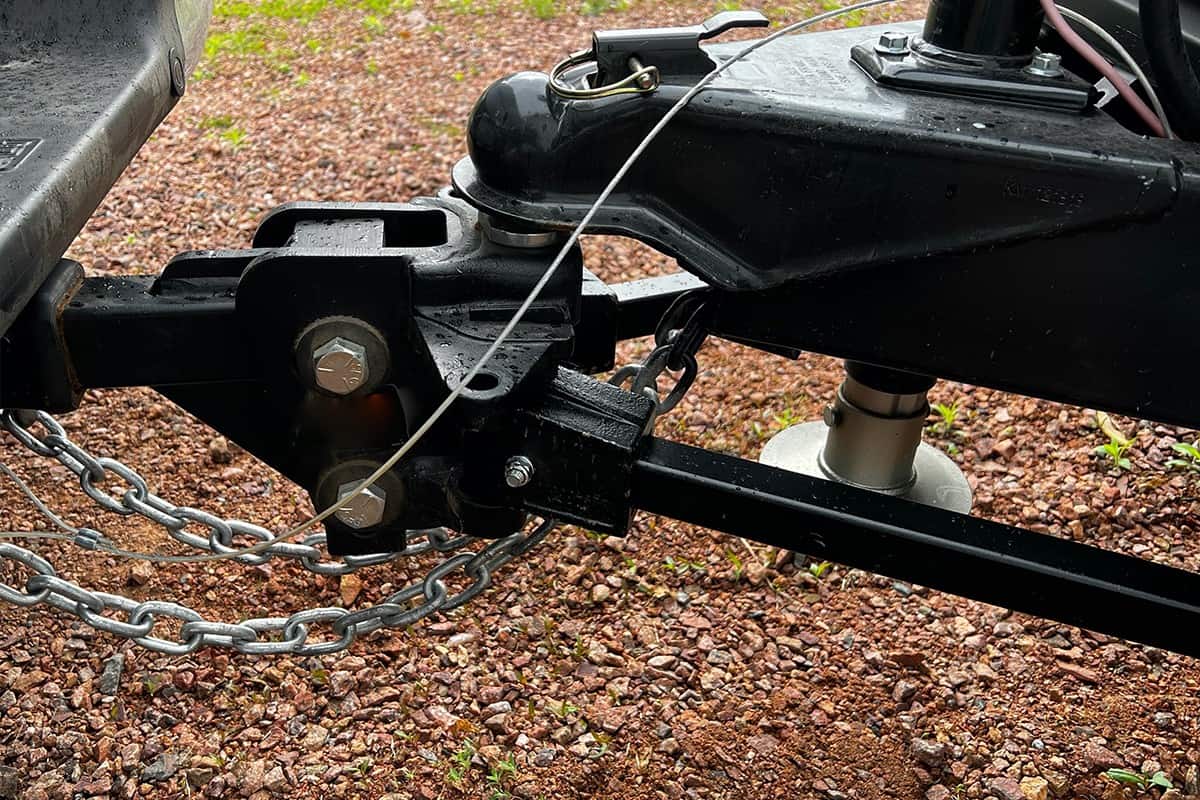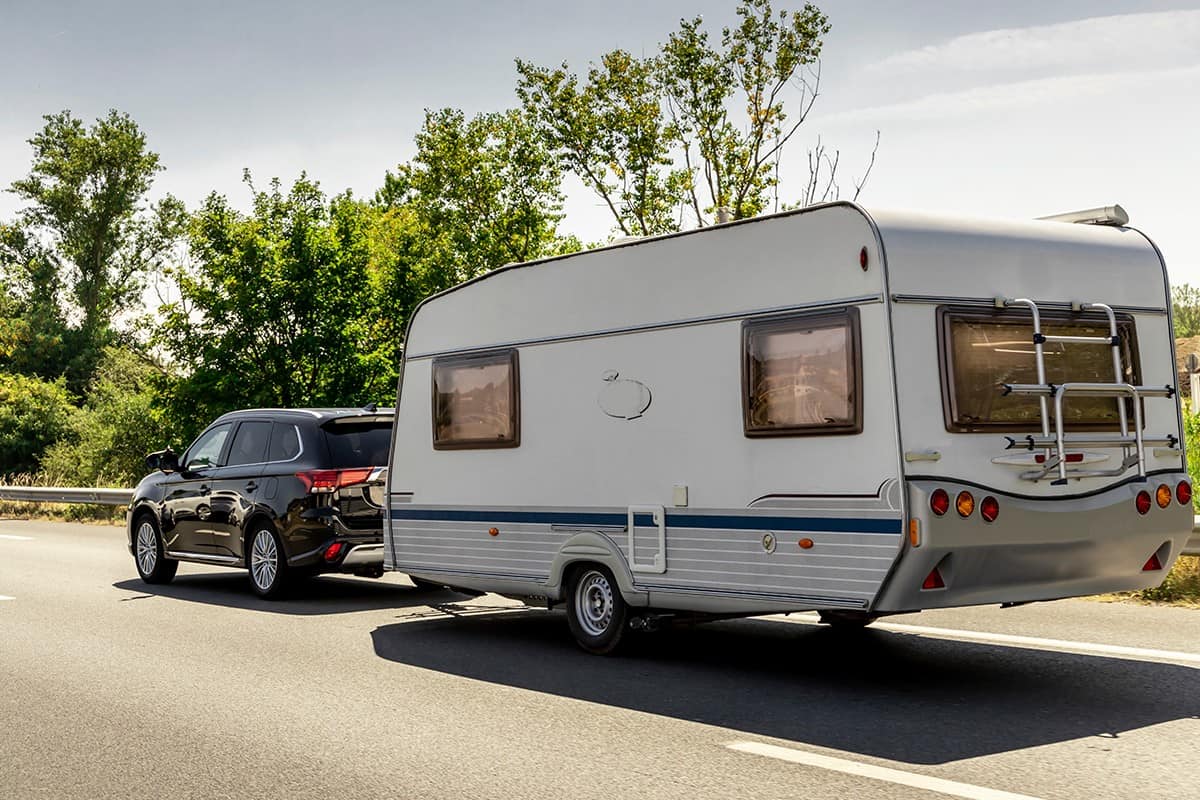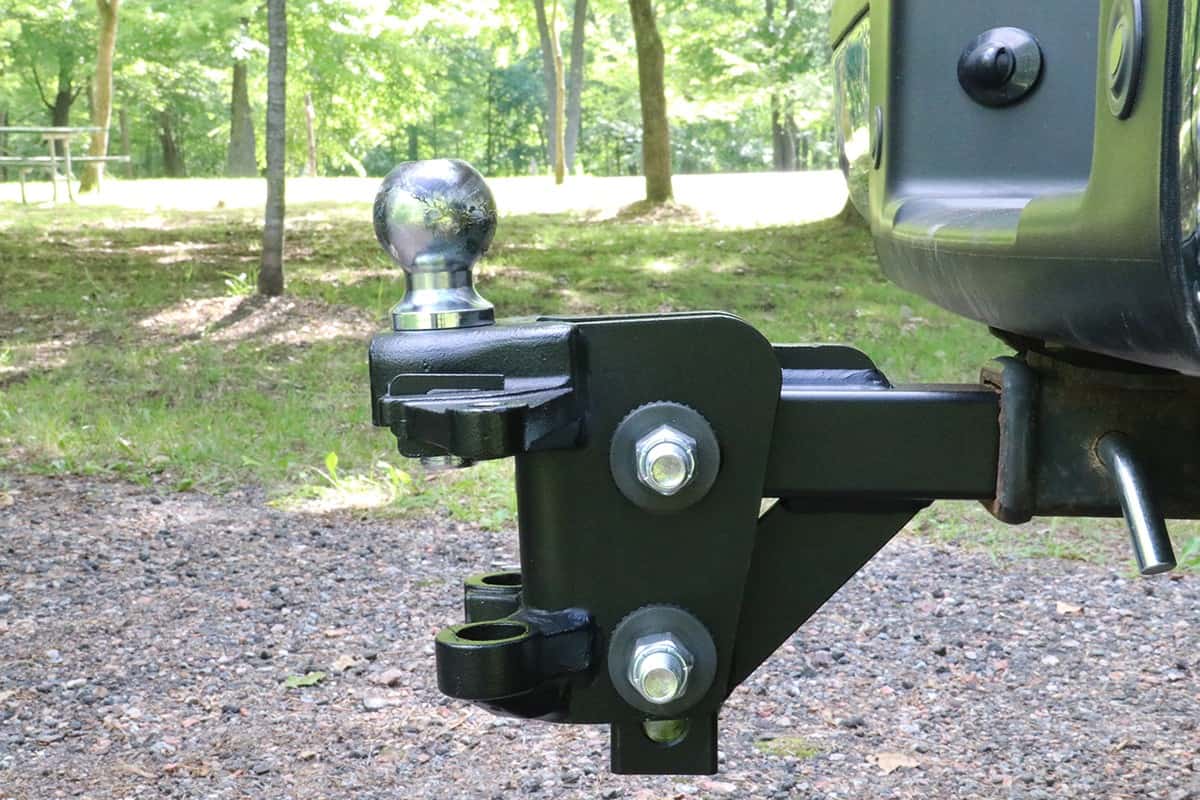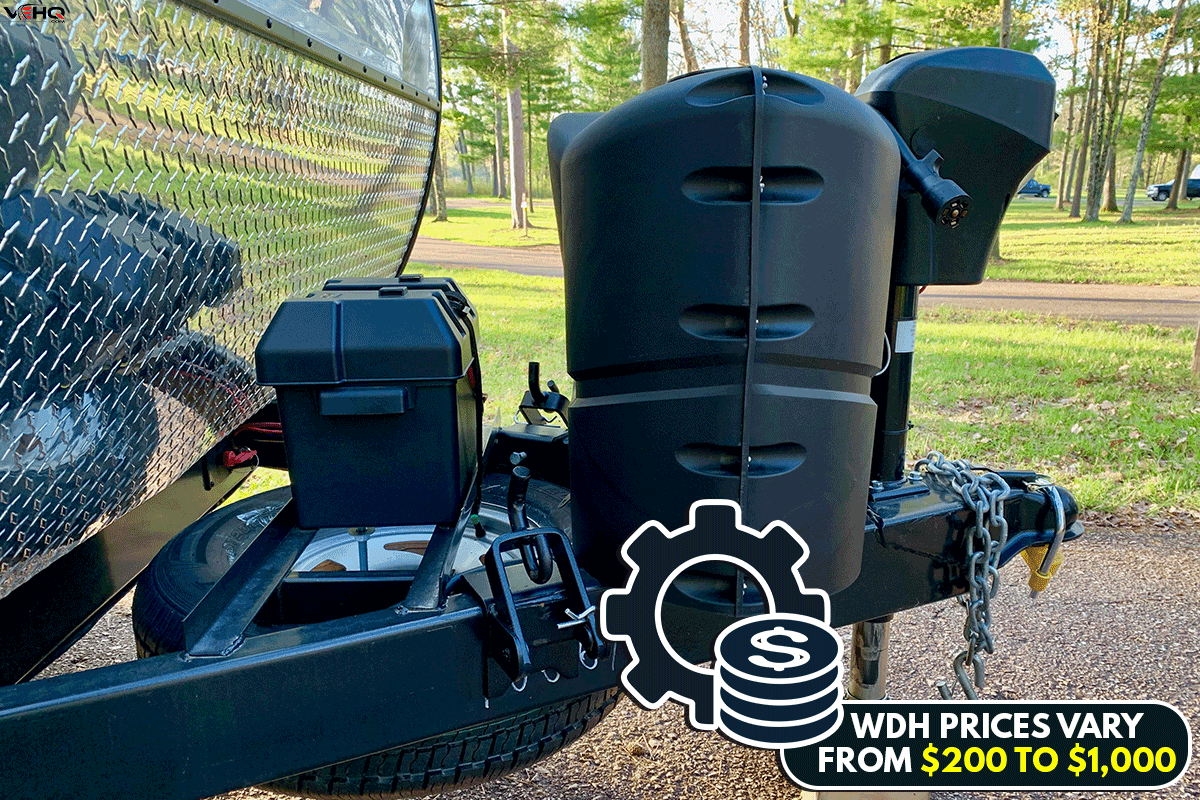As you know, a weight distribution hitch enables you to tow at the highest capacity permitted by your hitch while maintaining a smooth, level ride. Now, you may wonder, can it also reduce sway and sagging? Here is what we found as we researched this question.
Yes, it does. A weight distribution hitch also aids in addressing tow vehicle sag, enhancing steering and stopping, and addressing trailer sway when combined with sway control.
In the succeeding sections, we'll discuss how it helps in addressing sagging and swaying issues. We'll also cover signs of sagging your car might experience and delve into the causes of trailer sway and how to control it. We'll also tell you the best time to use a weight distribution hitch.
How Does A Weight Distribution Hitch Reduce Sagging?
The weight distribution hitch helps reduce sagging by lifting the back of the trailer or tow vehicle. However, the manner a WDH elevates the back of the truck is crucial; it employs torsion to transfer some of the tongue load to the trailer or tow vehicle's front axle.

This hitch type has two steel arms that stretch out close to the ball of the hitch. Through these steel arms, the load bearing down on the tongue is evenly distributed between your car's front axle and your trailer's back axle.
With an even weight distribution, the car and the trailer will level off and sag less.
How To Know If Your Trailer Is Sagging
The most obvious sign is that your trailer feels heavy. You put more stress on some parts when you haul more weight than your car can handle. Your powertrain's lifespan will be shortened by having to work harder.
Additionally, there is a delay in the steering reaction of your car. This is because of the imbalance of the steering alignment. As a result, you'll experience an uncontrollable ride.
You can also notice fuel inefficiency and increased tire wear. Moreover, you'll notice your headlights tilting upwards, especially when driving at night.
What Causes A Towed Trailer To Sway?

You may be curious about what factors contribute to the sway of your towed trailer. So, here are some factors that cause a towed trailer to sway:
Too Light Tongue Weight
Most frequently, sway occurs due to the trailer's weight being insufficiently applied to the ball of the tow vehicle's hitch. It's crucial to have the right amount of tongue weight to contribute to the gravitational force of the trailer.
Wind
When the wind blows, the force it creates causes your trailer to swing side-to-side. Be careful, as you can encounter gusts of winds even outside of windy weather condition. Passing vehicles may send a quick and powerful blast of wind toward the side of your trailer.
Also, if you are aware that you will be passing through a windy region, you should allow more time to reach your location so you can drive more slowly.
Uneven Weight Distribution
The uneven distribution of your cargo load can also cause your towed trailer to sway. That's why you must carefully plan your cargo's distribution and loading.
Harsh Weather And Road Conditions

Driving on bumpy, uneven roads can also cause your towed trailer to sway. Harsh weather also contributes to the swaying of your towed trailer.
Driving in adverse weather increases the risk of your trailer hydroplaning. Because of this, the wheels are much more likely to slide and spin, leading to trailer sway and making it possible for you to lose control.
How To Minimize Sway Using A Weight Distribution Hitch?
A weight distribution hitch helps in reducing the sway of your towed trailer. Nowadays, many weight distribution hitches with sway control are available in the market.
In windy circumstances, on slick roads, and when the driver makes a mistake, sway control lessens the likelihood of a trailer swaying side to side behind the tow vehicle.
This is relevant while pulling prominent trailers, especially those that are lightweight.
Tips To Reduce And Swaying Of A Towed Trailer

Here are some tips to reduce swaying while transporting your trailer.
Put 60% Of The Total Load In Front
As much as possible, ensure that 60 percent of the total load is concentrated in the front, near your car. If the rear portion of your trailer is heavier, it is harder to maneuver the car as the focus of the weight at the rear makes your drive handling unstable.
Be Careful Of The Tongue Weight
It's recommended that your tongue weight should be 10% and 15% of the overall trailer weight.
Drive Slowly/ Maintain A Regular Speed
If you want to avoid wobble when towing a trailer, it's best to keep your speed at 55 mph or less. Increased trailer wobble at higher speeds causes swaying and a loss of control of the trailer. This creates a highly hazardous situation.
When you're towing, going too fast might harm your car and the trailer. Avoid accelerating down slopes because you might find it harder to control your car at the bottom of the hill.
Faster speeds also make it more difficult to control your car if something goes wrong. Avoid traveling at high speed over bumpy roads. If you drive too quickly, you risk having a major accident since the trailer can flip or skid.
You can read more about this topic here: How Fast Can You Safely Drive When Towing an RV?
Avoid Using The Brake
Constant braking has a significant impact on the inertia of a trailer to brake, particularly if it lacks any independent brakes. The trailer may be moving at a slower rate than the tow vehicle, yet it may still be in a dangerous swing.
Having a break controller also helps. This electronic device enables the trailer brakes to be controlled and observed from the vehicle's cab. Always remember to apply the brake slowly and always calculate when to use them to avoid any accidents.
Click here for this product on Amazon.
Avoid Overloading Your Trailer
Avoid going over the maximum weight rating of your trailer. Consider the payload and tow limits as well as the total weight of your trailer. Tongue weight should also be considered.
Types Of Weight Distribution Hitches
Weight distribution hitches can be classified as two, based on the shape of their spring bars. One is the round bar, and the other is the trunnion bar.
Round Bar WDH
As the name implies, the spring bars in this type are round and usually stick out from the bottom of the head. They angle back to connect to the trailer body.
They usually have lesser ground clearance because the heads protrude from the bottom.
Click here for this product on Amazon.
Trunnion Bar WDH
This type of WDh has square-shaped spring bars. These bars are generally simpler to attach because you connect them parallel to the frame. Additionally, this permits higher ground clearance than round bar types generally provide.
Lastly, trunnion bars often have a higher towing capacity than round bars.
Click here for this product on Amazon.
When Is The Best Time To Use A Weight Distribution Hitch?

You'll surely need a weight distribution hitch when the towing load is 50% or more than your vehicle weight. You should also use one when you're experiencing too much sway, and there is sagging.
How Much Does A Weight Distribution Hitch Cost?

The price of a weight distribution hitch can range from $200 to $1,000, depending on its size and construction. Square bars are more common in high-end hitches, but round bars offer the best clearance for connecting the trailer to your vehicle.
To Sum It Up
Using a weight distribution hitch helps address sagging and swaying issues you might experience while towing a trailer. Ensure your trailer is level with your towing vehicle to avoid load concentration in the hitch point and prevent sagging. Some weight distribution hitches also have sway control features which help reduce the sway you might experience when towing your trailer.
However, there are still other factors you need to consider that contribute to the sway, such as road and weather conditions, uneven weight distribution, braking, and towing speed.
If you're curious whether a WDH increases the weight capacity of your trailer, you can check out this article: Does A Weight Distribution Hitch Increase Towing Capacity?
You can also check out this article if you have problems with your WDH making a popping sound: My Weight Distribution Hitch Is Making A Popping Noise - Why? What To Do?



